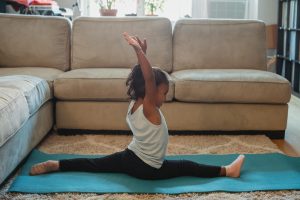The essential guide to finding the perfect running shoes
If you’re an avid runner or looking to start a new fitness journey, one of the most important pieces of equipment you’ll need is a good pair of running shoes. The perfect running shoes can make all the difference in your performance and overall comfort. But with so many brands, styles, and features to choose from, finding the perfect pair can be overwhelming. That’s why we’ve created this essential guide to help you navigate the world of running shoes and find the perfect fit for your feet.
The Importance of Finding the Perfect Running Shoes
When it comes to running, your shoes are the most important piece of equipment you will invest in. They are your only point of contact with the ground and play a significant role in your running form, speed, and overall performance. Running in the wrong shoes can lead to discomfort, injury, and even discourage you from continuing your fitness journey. That’s why finding the perfect pair of running shoes is essential for any runner, whether you’re a beginner or an experienced athlete.
Key Features to Consider
1. Type of Running
The first thing you need to consider when buying running shoes is the type of running you’ll be doing. Are you a road runner, a trail runner, or a track runner? The type of terrain you’ll be running on will determine the style and features of the shoe you need. For example, if you’re a road runner, you’ll need shoes with more cushioning to absorb the impact from the hard surfaces. Conversely, if you’re a trail runner, you’ll need shoes with more traction and durability to navigate through uneven and rugged terrain.
2. Foot Type
Next, you need to determine your foot type to find the right fit. There are three types of feet – flat, high arch, and neutral. You can easily determine your foot type by wetting your feet and standing on a piece of paper. If your feet leave an almost complete imprint, you have flat feet. If there’s a noticeable curve on the inside of your foot, you have high arches. And if there’s a slight inward curve, you have neutral feet. Different types of running shoes are designed to accommodate each foot type, so knowing yours can help you find the right fit.
3. Cushioning and Support
The cushioning and support of running shoes are essential for shock absorption and stability. Generally, the more cushioning a shoe has, the more supportive it is. However, it’s essential to find the right balance for your feet and running style. If you have flat feet, you’ll need more cushioning to compensate for the lack of arch support. On the other hand, if you have high arches, you’ll need a shoe with less cushioning and more support to prevent your feet from rolling inward.
4. Fit and Comfort
The fit and comfort of your running shoes should be a top priority. Ill-fitting shoes can lead to blisters and other uncomfortable foot issues, making it challenging to stick to your running routine. When trying on running shoes, make sure there’s about a thumb’s width of space between the end of the shoe and your longest toe. This will allow enough room for your feet to swell while running. Also, consider the width of the shoe as different brands and styles may fit differently.
Factors to Avoid
1. Buying Based on Brand or Style Alone
It can be tempting to choose your running shoes based on popular brands or trendy styles. However, what works for someone else may not necessarily work for you. It’s essential to prioritize function over fashion and choose a shoe that meets your specific needs and supports your feet.
2. Not Replacing Old Shoes
In general, running shoes should be replaced every 300-500 miles. Over time, the cushioning and support of shoes deteriorate, and running in worn-out shoes can lead to discomfort and injuries. Keep track of your mileage and replace your shoes when they start to feel worn out.
3. Not Taking Your Time
When finding the perfect running shoes, it’s crucial to take your time and try on multiple pairs. Rushing through the process can lead to choosing the wrong shoes and wasting your money. Make sure to walk around in the shoes, jog a bit, and get a feel for how they fit and support your feet before making a decision.
Conclusion
In conclusion, finding the perfect running shoes is crucial for any runner. By considering the type of running you do, your foot type, cushioning and support, fit and comfort, and avoiding common mistakes, you can find the perfect pair to support you on your fitness journey. Remember, everyone’s feet are different, and what works for one runner may not work for another. So, take the time to find the right fit and enjoy comfortable and safe runs for miles to come.










